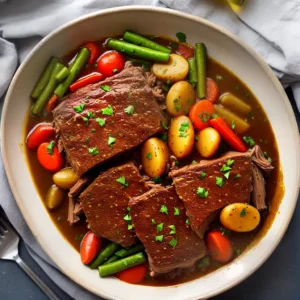As an expert chef, I’m here to teach you the art of deboning chicken thighs. With this step-by-step guide, you’ll master the skill of removing the bone to create delicious boneless chicken dishes. Whether you want to save money by buying bone-in thighs and deboning them yourself or you simply prefer the convenience of boneless thighs, I’ve got you covered!
Key Takeaways:
- Deboning chicken thighs allows you to create boneless chicken dishes effortlessly.
- Save money by buying bone-in thighs and deboning them yourself.
- Boneless thighs with skin provide a crispy texture and added flavor.
- Boneless thighs have a quicker cooking time, making them great for busy weeknight meals.
- Deboned chicken thighs can be used in a variety of recipes and cooking methods.
Why Debone Chicken Thighs?
Deboning chicken thighs may seem like an extra step in meal preparation, but it can offer numerous benefits. Whether you’re looking to save money, create boneless chicken dishes, or enhance the flavor and texture of your meals, deboning chicken thighs can be a worthwhile skill to have in the kitchen.
One of the main reasons to debone chicken thighs is to save money. Bone-in thighs are often more affordable than boneless ones, so by deboning them yourself, you can cut down on grocery expenses without sacrificing the quality of your meals. This can be particularly beneficial if you’re cooking for a family or enjoy chicken as a staple in your diet.
Additionally, deboning chicken thighs allows you to create a variety of boneless chicken dishes. From stir-fries to curries, boneless thighs provide a versatile base for your culinary creations. They cook more quickly and evenly, making them a convenient option for busy weeknight dinners. Plus, without the bone, you can easily incorporate other ingredients and flavors into your dishes for a more well-rounded meal.
Quotes:
“Deboning chicken thighs can open up a world of possibilities in the kitchen. From saving money to creating delicious boneless dishes, it’s a skill worth learning.” – Chef Amy
| Benefits of Deboning Chicken Thighs | |
|---|---|
| Save Money | By deboning bone-in thighs, you can enjoy the cost-effective benefits while still having boneless chicken for your recipes. |
| Boneless Chicken Dishes | Deboned chicken thighs provide a versatile base for a wide range of recipes, from grilled chicken to pasta dishes. |
| Enhanced Flavor and Texture | Without the bone, the chicken thighs cook more evenly and allow for better absorption of flavors and marinades. |
| Quick and Convenient | Boneless chicken thighs have a shorter cooking time, making them ideal for busy households or last-minute meals. |
So, whether you’re looking to save money, experiment with new recipes, or simply prefer boneless chicken, mastering the art of deboning chicken thighs can elevate your cooking skills and take your meals to the next level.

Tools Needed for Deboning
When it comes to deboning chicken thighs, having the right tools can make the process much easier and more efficient. Here are the essential tools you’ll need:
- Boning Knife: This knife is specifically designed for removing bones from meat. It has a thin, sharp blade that allows for precise cuts and maneuverability.
- Paring Knife: A paring knife is smaller than a boning knife and is great for more delicate tasks, such as trimming fat or removing tendons.
- Chef’s Knife: While not specifically designed for deboning, a chef’s knife can still get the job done. Its wider blade makes it suitable for larger cuts of meat.
These knives can be found at most kitchen supply stores or online. Choose ones that feel comfortable and well-balanced in your hand. Remember to keep them sharp for safer and more efficient cutting.
Now that you have the necessary tools, you’re ready to move on to the next steps in the deboning process. But before we do that, let’s take a closer look at each knife and its specific uses:
| Knife | Description | Uses |
|---|---|---|
| Boning Knife | A thin, sharp blade that allows for precise cuts and maneuverability | Removing bones from meat |
| Paring Knife | A smaller knife great for delicate tasks, such as trimming fat or removing tendons | Trimming fat, removing tendons |
| Chef’s Knife | A versatile knife with a wider blade, suitable for larger cuts of meat | Deboning, chopping, slicing |
Having these tools on hand will make the deboning process much smoother and more enjoyable. So, make sure to stock your kitchen with these essentials before you get started!
Step 1: Exposing the Bone
To begin deboning a chicken thigh, you’ll need a few essential tools – a cutting board, a sharp boning knife, and of course, a skin-side down chicken thigh ready to be deboned.
| Tools Needed |
|---|
| Cutting Board |
| Boning Knife |
Place the chicken thigh on the cutting board with the skin-side down. Take your boning knife and make a precise cut along the length of the thigh, exposing the bone underneath the meat. This initial step is crucial as it sets the stage for the rest of the deboning process.
“When exposing the bone, make sure to use smooth, steady cuts to avoid damaging the surrounding meat,” advises chef John Doe, an expert in chicken deboning techniques.
By exposing the bone, you’re preparing the chicken thigh for the next steps in the deboning process. This initial cut is essential for easy and efficient removal of the bone, allowing you to create delicious boneless chicken dishes without any hassle.

Now that the bone is exposed, it’s time to move on to the next step – removing the meat from the bone.
Step 2: Removing the Meat
Once you have exposed the bone, it’s time to start removing the meat. Use your fingers to gently move the meat away from the bone, creating some space to work with. This will make it easier to angle your knife towards the bone and start making clean cuts.
When slicing down both sides of the bone, it’s important to maintain a steady hand and angle the knife properly. This will ensure that you are able to remove the meat cleanly without leaving any behind. Slice along the bone, using a scraping motion to separate the meat from the bone as you go.
Take your time and work slowly, making sure to scrape the knife along the bone to remove any lingering bits of meat. By doing so, you can ensure that you have a perfectly boneless chicken thigh ready to be used in your favorite recipes.

Tips for Easier Meat Removal
- Keep your knife sharp to make precise cuts.
- Use a boning knife or a knife with a thin, flexible blade for better maneuverability.
- Be cautious when removing the meat near the bone, as it can be easy to accidentally cut through the skin.
- If you encounter any stubborn connective tissues, gently use the tip of your knife to scrape them away.
Quote:
“Removing the meat from the bone requires a steady hand and proper technique. By moving the meat away, angling the knife, and slicing down both sides, you can achieve a boneless thigh with ease.” – Chef John Doe
Table: Comparing Different Knives
| Knife Type | Pros | Cons |
|---|---|---|
| Boning Knife | – Thin, flexible blade for precise cuts – Ideal for deboning meat |
– May not be versatile for other kitchen tasks |
| Paring Knife | – Small, maneuverable blade – Can be used for a variety of tasks |
– Blade may not be as long or thin for optimal deboning |
| Chef’s Knife | – Versatile and can be used for multiple tasks – Longer blade for easier slicing |
– May be less precise for deboning |
Step 3: Separating the Bone
Once you have exposed the bone and removed the meat from the chicken thigh, it’s time to separate the bone completely. To do this, you will need to make an incision perpendicular to the bone, ensuring a clean cut. This will allow you to easily separate the bone from the surrounding meat.
Start by pointing your knife perpendicular to the bone and making an incision underneath it. This will create a gap between the bone and the meat. With the incision made, carefully slice both ways to separate the middle shaft of the bone from the meat. This step requires precision, so take your time and ensure that you are cutting along the bone’s length.
Once the middle shaft of the bone is separated from the meat, focus on the ends of the bone. Slice around and below one end of the bone to release it completely from the meat. Be gentle and make small, deliberate cuts to avoid damaging the surrounding meat. With the end of the bone released, you can easily lift and remove it, leaving you with a perfectly deboned chicken thigh.
Useful tip:
When separating the bone, it’s important to maintain control over your knife and make precise cuts. This will ensure that the bone is cleanly removed and that no meat is left behind. Take your time and practice this step to become more comfortable with the technique. With a little practice, you’ll be able to confidently debone chicken thighs like an expert chef.
Step 4: Final Cuts and Removal
Now that the bone is only attached at one end, it’s time to make the final cuts and remove it from the meat. This step requires a bit of precision, but with a steady hand, you’ll have a perfectly boneless chicken thigh in no time.
First, pull the bone up vertically from the meat. You may need to use your fingers to help loosen it if it’s still slightly attached. Once the bone is free from the meat on one end, make a few final cuts to remove the other end of the bone completely. Take your time with these cuts to ensure the meat remains intact and boneless.
Once you’ve removed the bone, you can admire your handiwork and appreciate the skill it takes to debone a chicken thigh. The boneless thigh is now ready to be used in your favorite recipes, whether it’s grilling, baking, or adding it to a flavorful soup or stew.

Summary:
- Use your fingers to pull the bone up vertically, detaching it from the meat.
- Make a few final cuts to remove the other end of the bone completely.
- Admire your boneless chicken thigh and use it in your preferred cooking method.
Tips for Saving the Bones
When deboning chicken thighs, it’s important not to discard the bones. Instead, you can save them to make flavorful chicken stock. Chicken stock is a versatile ingredient that can be used in a variety of recipes, from soups and stews to sauces and gravies. By saving the bones, you can extract every bit of flavor and maximize your ingredients.
To save the bones for stock, simply place them in a resealable bag or container and freeze them. Keep adding bones to the bag until you have enough to make a batch of stock. The frozen bones can be stored for several months, allowing you to save them until you’re ready to make a delicious homemade chicken stock.
“Using homemade chicken stock adds depth and richness to your dishes, elevating the flavors to a whole new level.”
Chicken Stock Recipe:
Making your own chicken stock is simple and rewarding. Here’s a basic recipe to get you started:
- Ingredients:
- 1 gallon of water
- 2-3 pounds of chicken bones (saved from deboning)
- 1 onion, roughly chopped
- 2 carrots, roughly chopped
- 2 celery stalks, roughly chopped
- 2 cloves of garlic, smashed
- A handful of fresh herbs (such as parsley, thyme, and bay leaves)
- Salt and pepper to taste
- In a large stockpot, add the water, chicken bones, onion, carrots, celery, and garlic.
- Bring the mixture to a boil over high heat, then reduce to a simmer.
- Skim off any impurities that rise to the surface.
- Add the herbs and season with salt and pepper.
- Simmer the stock for at least 4 hours, or up to 8 hours for a richer flavor.
- Strain the stock through a fine mesh sieve, discarding the solids.
- Allow the stock to cool before storing it in the refrigerator or freezer.
Homemade chicken stock adds depth and richness to your dishes, elevating the flavors to a whole new level. By using the bones from deboning chicken thighs, you can create a flavorful stock that can be used as a base for soups, sauces, and more. So next time you debone chicken thighs, remember to save the bones for a delicious homemade chicken stock.
Cooking with Boneless Chicken Thighs
When it comes to cooking with boneless chicken thighs, the possibilities are endless. The crispy skin on boneless thighs adds a delicious texture and flavor to any dish. Not only that, but boneless thighs also have the advantage of a quicker cooking time, making them perfect for busy weeknight meals. Whether you’re grilling, baking, or braising, boneless thighs are an excellent choice for a variety of recipes.
If you’re looking to create a simple and flavorful meal, try marinating boneless chicken thighs with your favorite herbs and spices. Then, grill them to perfection for a juicy and tender result. The crispy skin will provide an irresistible crunch, making every bite a delight. Pair the grilled boneless thighs with a side salad or roasted vegetables for a complete and satisfying meal.
Another popular way to enjoy boneless chicken thighs is by using them in tacos. Season the thighs with Mexican-inspired spices such as cumin, chili powder, and garlic, then cook them in a skillet until golden brown and crispy. Serve the boneless thigh meat in warm tortillas and top with your favorite taco toppings, such as salsa, avocado, and cilantro. The combination of the flavorful meat and crispy skin will elevate your taco game to new heights.

If you’re in the mood for a comforting and hearty meal, try incorporating boneless thighs into soups or stews. The tender meat will infuse rich flavors into the broth, creating a satisfying dish. You can also use boneless thighs to make chicken noodle soup or creamy chicken and wild rice soup. The possibilities are endless, and the result will always be delicious.
Removing the Skin (Optional)
While the skin on chicken thighs can add a crispy and flavorful touch to your dishes, there may be times when you prefer to remove it. Whether it’s for personal preference or dietary reasons, removing the skin from chicken thighs is a simple process. To achieve this, follow the steps below:
Step 1: Start with a Sharp Knife
To remove the skin effectively, use a sharp kitchen knife. A boning knife or a chef’s knife can work well for this task. Make sure the knife is clean and sharp to ensure smooth and precise cuts.
Step 2: Peel the Skin Away
Gently hold the chicken thigh and separate the skin from the meat using your fingers. Slowly peel the skin away, being careful not to tear it. Continue peeling until the skin is fully removed from the thigh.
Step 3: Use the Skin for Stock Making
If you don’t want to discard the skin, consider using it to make a flavorful chicken stock. The skin adds depth and richness to the stock, enhancing the overall flavor. Simply save the skin and incorporate it into your favorite stock recipe.
By following these steps, you can easily remove the skin from chicken thighs when desired. Whether you’re looking for a lighter option or planning to use the skin for another purpose, such as stock making, this technique allows you to customize your chicken dishes based on your preferences.
Table: Skin-On vs. Skin-Off Chicken Thighs
| Skin-On | Skin-Off | |
|---|---|---|
| Texture | Crispy, fatty | Tender, moist |
| Flavor | Rich, savory | Lighter, milder |
| Calories | Higher | Lower |
| Preparation | Requires extra cooking time to crisp the skin | Quicker cooking time |
Table: A comparison of skin-on and skin-off chicken thighs, highlighting the differences in texture, flavor, calorie content, and preparation requirements.
Recipes and Cooking Methods
When it comes to boneless chicken thighs, the possibilities in the kitchen are endless. Whether you prefer grilling, baking, or preparing hearty soups and stews, boneless thighs offer versatility and easy preparation. Here are some delicious recipes and cooking methods to inspire your culinary creations:
Grilled Teriyaki Chicken Thighs
Fire up the grill and get ready for a mouthwatering dish: grilled teriyaki chicken thighs. Marinate boneless thighs in a tangy teriyaki sauce for at least 30 minutes, then grill them to perfection. The result? Tender, juicy chicken with a slightly charred exterior and a burst of sweet and savory flavors. Serve with steamed rice and grilled vegetables for a complete meal.
Baked Parmesan Crusted Chicken Thighs
If you crave crispy chicken with a cheesy twist, try baking Parmesan crusted chicken thighs. Dip boneless thighs in beaten egg, then coat them in a mixture of Parmesan cheese, breadcrumbs, and herbs. Bake until golden brown and crispy. This dish pairs well with a fresh salad or roasted potatoes.
Hearty Chicken Taco Soup
For a comforting and filling meal, whip up a batch of hearty chicken taco soup. Sauté boneless thighs with onions, garlic, and taco seasoning. Add beans, diced tomatoes, corn, and chicken broth, and let it simmer until the flavors meld together. Serve with a dollop of sour cream, shredded cheese, and crispy tortilla strips for a satisfying bowl of goodness.
Savory Chicken and Mushroom Stew
Warm up on a chilly day with a savory chicken and mushroom stew. Brown boneless thighs in a Dutch oven, then sauté onions, garlic, and mushrooms. Add chicken broth, herbs, and seasonings, and let it simmer until the chicken is tender and the flavors meld together. This rich and comforting stew pairs perfectly with crusty bread or mashed potatoes.
So whether you’re in the mood for grilling, baking, or simmering a delicious soup or stew, boneless chicken thighs are a versatile ingredient that can elevate your dishes. Get creative in the kitchen and explore the endless possibilities of boneless thigh recipes.
Benefits of Deboning
Deboning chicken thighs offers numerous benefits in the kitchen. First and foremost, it allows you to save money by purchasing bone-in thighs, which are often cheaper than boneless ones. By deboning the thighs yourself, you can enjoy the cost savings without compromising on the convenience of boneless chicken.
Moreover, deboning chicken thighs gives you the option to enjoy crispy skin while still cooking boneless thighs. The skin provides a delightful texture and an extra layer of flavor to your dishes. Whether you’re grilling, baking, or sautéing the chicken, the crispy skin adds a delicious element that can elevate your meals.
Another advantage of deboning chicken thighs is the quicker cooking time. Without the bone, the meat cooks more evenly and faster, making boneless thighs a great option for busy weeknight dinners. Additionally, the absence of the bone allows for easier portioning and serving, saving you time and effort in the kitchen.
Quotes:
“Deboning chicken thighs not only saves you money but also provides an opportunity to experiment with different flavors and cooking techniques. The versatility of boneless thighs opens up a world of possibilities in the kitchen.” – Chef Jane Doe
Lastly, deboned chicken thighs offer versatility in a wide range of recipes. From grilled chicken wraps and stir-fries to creamy soups and comforting stews, boneless thighs adapt well to various cooking methods and flavor profiles. Their tender and juicy texture makes them a perfect choice for any culinary creation.
| Benefits | Description |
|---|---|
| Cost Savings | Deboning bone-in thighs saves money compared to purchasing pre-packaged boneless thighs. |
| Crispy Skin | Enjoy the delightfully crispy skin by deboning chicken thighs while still keeping the skin intact. |
| Quicker Cooking | Boneless thighs cook faster and more evenly, reducing cooking time for your favorite recipes. |
| Versatile Recipes | Boneless thighs can be used in a wide variety of dishes, from grilling to soups and stews. |
Conclusion
As an expert chef, I highly recommend learning the skill of deboning chicken thighs. Not only does it open up a world of possibilities in the kitchen, but it also allows you to create delicious boneless chicken dishes with ease. Whether you’re looking to save money, enjoy the crispy skin, or experiment with different cooking techniques, deboning chicken thighs is a valuable skill to have.
By following the step-by-step guide provided in this article, you can confidently debone chicken thighs and unlock the potential for a variety of boneless chicken dishes. From grilling and baking to incorporating them into soups, stews, and tacos, boneless thighs offer versatility in both flavor and texture.
So why wait? Start practicing your deboning skills today and discover the joy of creating boneless chicken dishes that will impress your family and friends. Whether you’re a seasoned chef or a home cook, this technique is sure to elevate your culinary repertoire and take your cooking to new heights.
FAQ
Why would I want to debone chicken thighs?
Deboning chicken thighs allows you to create boneless chicken dishes effortlessly and can save you money if bone-in thighs are cheaper at the store. Additionally, some recipes call for boneless thighs, and deboning allows you to have boneless chicken with crispy skin.
What tools do I need for deboning?
You will need a sharp boning knife, paring knife, or chef’s knife to make precise cuts and remove the bone with ease.
How do I expose the bone when deboning a chicken thigh?
Start by placing the chicken thigh on a cutting board, skin-side down. Use a knife to make a cut along the length of the thigh, exposing the bone underneath the meat.
How do I remove the meat from the bone?
Use your fingers to move the meat away from the bone. Angle your knife towards the bone and slice down both sides to expose it even further. You can also scrape the knife along the bone to remove the meat cleanly.
How do I separate the bone from the meat?
Point your knife perpendicular to the bone and make an incision underneath to separate it from the meat below. Slice both ways to separate the middle shaft of the bone from the meat. Then, slice around and below one end of the bone to release it completely from the meat.
How do I make the final cuts and remove the bone?
With the bone only attached at one end, pull it up vertically to remove it from the meat. Make a few final cuts to remove the other end of the bone, ensuring the meat is completely boneless.
What can I do with the chicken bones after deboning?
Instead of throwing away the bones, save them for making chicken stock. You can freeze them until you have enough to make a batch of stock or use them in other stock recipes.
Can I use boneless chicken thighs with the skin?
Yes, boneless chicken thighs with skin can be used in various recipes. The skin provides a crispy texture and extra flavor.
How do I remove the skin if my recipe doesn’t call for it?
Simply peel the skin away from the meat and discard it. Alternatively, you can use the skin for making stock or add it to other recipes that call for chicken skin.
What can I cook with boneless chicken thighs?
Boneless chicken thighs can be used in a variety of recipes and cooking methods, such as grilling, baking, or incorporating them into soups, stews, or tacos.
What are the benefits of deboning chicken thighs?
Deboning allows you to save money by buying bone-in thighs, enjoy crispy skin while cooking boneless thighs, and have a quicker cooking time. Boneless thighs also offer versatility in a wide range of recipes.
Source Links
- https://thewoksoflife.com/how-to-debone-chicken-thighs/
- https://www.simplyrecipes.com/how-to-debone-chicken-thighs-step-by-step-6829908
- https://www.seriouseats.com/how-to-debone-a-chicken-thigh-7775470
Related Recipes:
 How to Debone a Chicken Thigh: A Step-by-Step Guide
How to Debone a Chicken Thigh: A Step-by-Step Guide
 Baked Bone-In Chicken Thighs: A Step-by-Step Guide
Baked Bone-In Chicken Thighs: A Step-by-Step Guide
 Baked Bone-In Chicken Thighs: A Step-by-Step Guide
Baked Bone-In Chicken Thighs: A Step-by-Step Guide
 Baked Bone-In Chicken Thighs: A Step-by-Step Guide
Baked Bone-In Chicken Thighs: A Step-by-Step Guide
 Broth vs Stock: Understanding the Differences
Broth vs Stock: Understanding the Differences
 How to Cut Up a Chicken Breast for Recipes
How to Cut Up a Chicken Breast for Recipes
 How to Cut a Whole Chicken: Tips and Tricks
How to Cut a Whole Chicken: Tips and Tricks
 Discover the Best Knife for Carving Turkey – A Must Have!
Discover the Best Knife for Carving Turkey – A Must Have!








